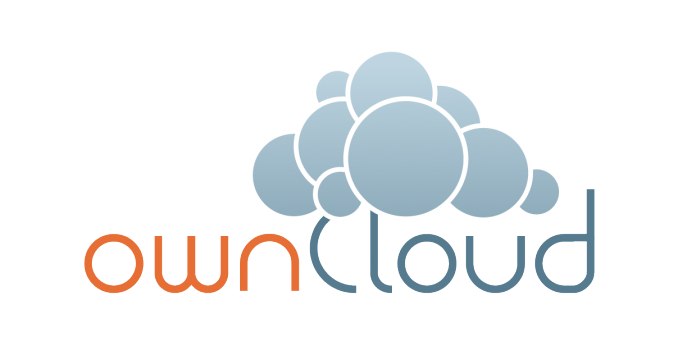A brief Introduction about Cloud
Every one nowadays heard about cloud storage. This notion means the storage of data online in the cloud, it is where in a company’s data is stored in and accessible from multiple distributed and connected resources that comprise a cloud as it is defined by webopedia. Currently, It is all around us in our smart phones, on desktops and servers etc. It gives users the benefits of greater accessibility and reliability, protection for data, lower storage costs and rapid deployment. It is responsible for keeping the data available and accessible and the environment protected and running. There are four main types of cloud storage (personal, public, private and hybrid cloud storage) which will described in this article and we will just give you the instructions how to build your personal cloud storage using ownCloud application.
Types of Cloud storage
As it was mentioned in the introduction, there are 4 types of cloud storage described as below:
- Public Cloud Storage: also called storage-as-a-service, on-line storage or utility storage, is a service model for data storage on a pay-per-use basis. It is where the company and storage service provider are separated. The cloud storage provider manages the enterprise’s public cloud storage.
- Personal Cloud Storage: also known as mobile cloud storage is a subset of public cloud storage used to store an individual’s data in the cloud and providing the individual with access to the data from anywhere. Apple’s iCloud is an example of personal cloud storage.
- Private Cloud Storage: also called internal cloud storage, is a service delivery model for storage within a large enterprise. It is a form of cloud storage where the enterprise and cloud storage provider are integrated in the enterprise’s data center.
- Hybrid Cloud Storage: is a combination of public and private cloud storage where some critical data resides in the enterprise’s private cloud while other data is stored and accessible from a public cloud storage provider.
Advantages of Cloud Storage
From the advantages of using Cloud Storage we can list the following ones:
- Cost: Online storage services reduce much of the cost associated with traditional backup methods, providing ample storage space in the cloud for a low monthly fee.
- Security: Storing confidential or sensitive information in the cloud is often more secure than storing it locally, especially for businesses. With online storage services, data is encrypted both during transmission and while at rest, ensuring no unauthorized users can access the files.
- Invisibility: Cloud storage is invisible; with no physical presence, it doesn’t take up valuable space at home or in the office
- Automation: Online storage services make the tedious process of backing up easy to accomplish through automation.
- Accessibility: You can access your account from any internet connection, whether you are on a mobile browser or your work computer
- Sharing: one file or an entire folder can be easily shared with just a few clicks.
In this article, we will explain how you can build your personal Cloud Storage using ownCloud applications. In fact the ownCloud is a free, open-source and powerful web application for data synchronizing data, sharing file, and remote storing of files. Its open architecture is extensible via a simple but powerful API for applications and plugins and works with any storage.
Installation of ownCloud in Linux
Before starting the installation of this application it is required to have LAMP stack already installed. So if you are working with Debian, Ubuntu or Linux Lint you have to use the following commands:
# apt-get install apache2 apache2-doc apache2-utils mysql-server mysql-client php5 php5-mysql php5-curl
But if you are working with Redhat or CentOS or Fedora, you have to use the following command:
# yum install httpd mysql-server mysql-client php php-mysql php-curl
Then use the following command to login to your database:
# mysql –u root -p
Use the following command to create a database:
mysql> create database cloud ; Query OK, 1 row affected (0.00 sec)
mysql> grant all on cloud.* to tecmint@localhost identified by 'your_password';
Query OK, 0 rows affected (0.00 sec)
Now you can download the ownCloud application from its official website, you can use wget or apt or yum command to make the download of this application. So let’s start:
# wget https://download.owncloud.org/community/owncloud-8.0.0.tar.bz2
After finishing the download replace this package to your Apache working directory using the following command if you have Debian system:
# cp owncloud-8.0.0.tar.bz2 /var/www/
And the following command if you have RedHat system:
# cp owncloud-8.0.0.tar.bz2 /var/www/html/
Then use the following command to extract the package:
# tar -jxvf owncloud-8.0.0.tar.bz2
And the rm -rf command may be used to remove the archive after the extraction of the package:
# rm -rf owncloud-8.0.0.tar.bz2
And change the permission of your ownCloud file using the following command. We will use 777 which means that we give read, write and execute permission which is temporary because we need to have it now. Then after the installation we will change it.
# chmod -R 777 owncloud/
Now use the following command to enable the “mod_rewrite” and “mod_headers” under Debian which is by default enabled under RedHat:
# a2enmod rewrite
# a2enmod headers
Then open the Apache global configuration file under Debian using the following command:
# vi /etc/apache2/sites-available/default
And the following command if you are working under RedHat:
# vi /etc/httpd/conf/httpd.conf
Then use the following commands to change the “AllowOverride None” to “AllowOverride All”:
AllowOverride None
AllowOverride All
And use the following commands to restart your Apache under Debian system:
# service apache2 restart
And the following command under RedHat system:
# service httpd restart
Now you can access your personal cloud storage using the following commands:
http://localhost/owncloud
Or:
http://your_address_IP/owncloud
Then you have to create your admin account and where you will store your files and folders. After that you have to enter your MySQL database username, password and database name. if you enter all that you will be able to start using your personal cloud storage by clicking the finish button.
Later if you want you can add users and import users account, give each user a specific role and allocate space using the Gear icon located at the left bottom of the interface.
Conclusion:
With this article you can install and configure your own personal cloud storage and start storing your data and folders in a protected environment. Even if you have your own cloud storage application, try using this new application OwnCloud and give us your feedback.





